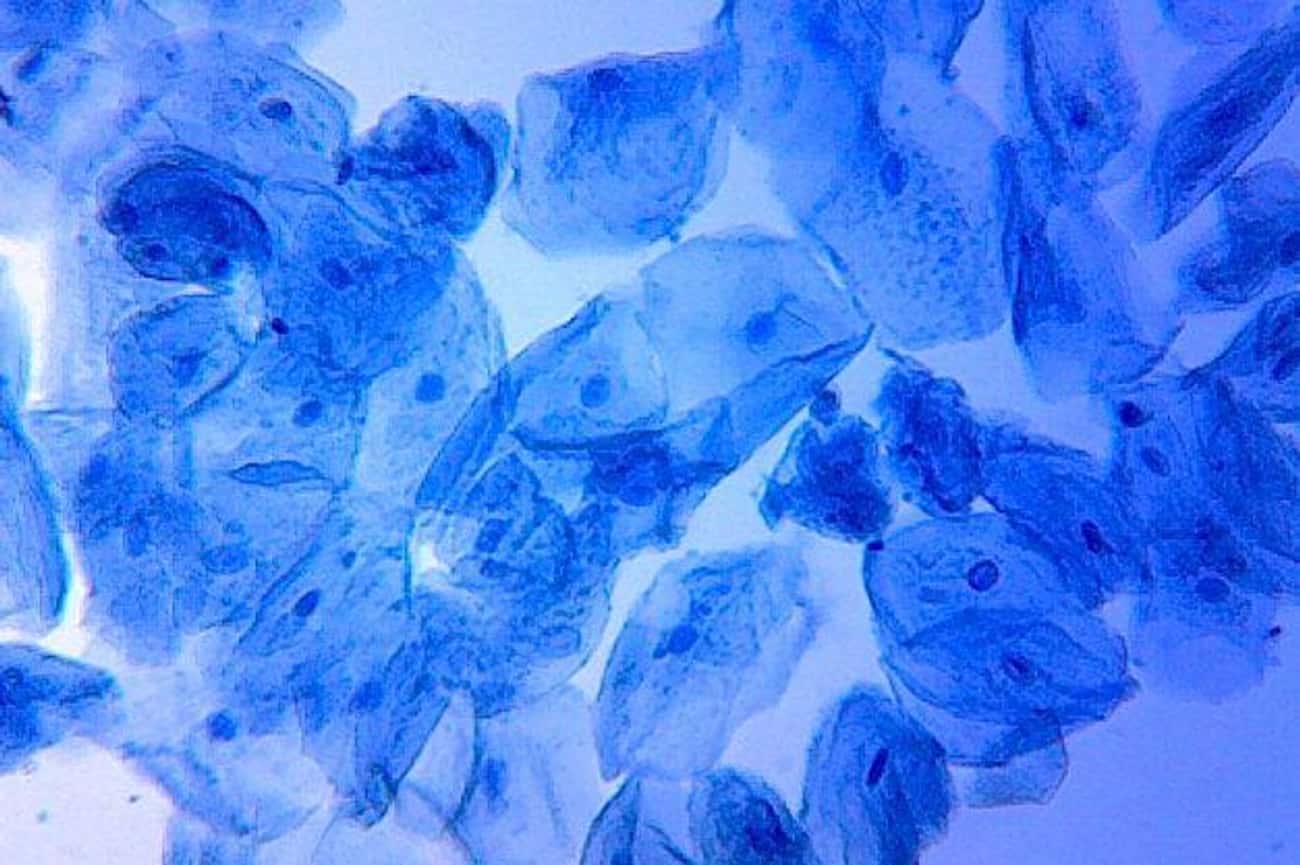Facts And Stories About The 'Blue Fugates'
They Lived In Isolation
Photo: Unknown / Via Owlcation / CC BY-SA 4.0The Fugate family first settled in Kentucky in 1820. Martin Fugate and his wife, Elizabeth Smith, came to Troublesome Creek, an out-of-the-way region of Appalachia. According to family stories, Martin Fugate was blue himself. Even if this wasn't true, his offspring ended up with an unusual appearance: his son Zachariah was born with blue skin, and so were three more of their seven children.
Due to the isolated nature of the community, the Fugate's neighbors knew about the "blue people," but few outsiders did.
They Had Unusual Blood
Photo: Wellcome Images / Wikimedia Commons / CC BY 4.0So, where did that blue color come from? The Fugates had a genetic defect that resulted in a condition called methemoglobinemia, which means their blood didn't carry as much oxygen around the body. This makes the blood darker, which in turn causes the skin of Caucasians to appear blue, and their lips to look purple. In addition, arterial blood looks chocolate-brown rather than red.
People with methemoglobinemia have higher levels of methemoglobin in their blood; they may have 10-20%, versus the average person's less than 1%. The Fugates' very blood was different from that of their neighbors.
Their Condition Partially Arose From Inbreeding
Photo: Tom Gill. / flickr / CC-BY-NC-ND 2.0Martin Fugate and his bride, Elizabeth Smith, both carried the same recessive gene that causes methemoglobinemia. It wouldn't have affected future generations of Fugates - if they hadn't married within the family, that is. The Fugates lived in an isolated area, which limited their options. Zachariah Fugate, one of the first known Blue Fugates, married his aunt; one of their sons married a close cousin. In turn, one of their children married another cousin.
It makes for a confusing family tree marked with plenty of blue individuals. As one of the family members quipped, "I'm kin to myself."
Luna Fugate Was The Bluest Blue Fugate
At the end of the 19th century, a man named John Stacy attended church one Sunday in eastern Kentucky. He spotted a young woman, and apparently liked what he saw. The two courted, got married, and had 13 children. The woman was Luna Fugate, and according to lore, she was bluest Blue Fugate of them all.
According to a local nurse, "The bluest Fugates I ever saw was Luna and her kin. Luna was bluish all over. Her lips were as dark as a bruise. She was as blue a woman as I ever saw."
Interestingly enough, Stacy himself refused to say whether his beloved wife was blue.
They Were Shunned
Photo: Lewis Hine/National Archives / Wikimedia Commons / Public DomainThe Fugates' blue skin was more than just startling - it was also a clear sign the family had practiced intermarriage. As time went on and people began to discover more about the harmful effects of inbreeding, that blue skin became even more of a stigma.
Their neighbors were not always kind to the Fugates, and in response, the family withdrew even more from their tiny community. By the time Dr. Madison Cawein contacted the family in the 1960s, it was clear they were all too used to being outcasts: "They wouldn't come into the waiting room. You could tell how much it bothered them to be blue."
They Lived Long, Healthy Lives
Photo: IONEXX / via YouTubeMethemoglobinemia can cause developmental delay and seizures, but despite the intense appearance of their blue skin and purple lips, none of the Fugates suffered poor health or lived in pain. The condition had only a cosmetic effect, though the family endured psychological pain from their outsider status.
Many of the family lived to a ripe old age, with Luna Stacy bearing 13 children before passing at 84.
They Were Treated With Blue Dye
Photo: Joseph Elsbernd / Wikimedia Commons / CC BY-SA 2.0In the early 1960s, the case of the Blue Fugates was brought to the attention of Dr. Madison Cawein, a hematologist at a University of Kentucky medical clinic. He began "tromping around the hills looking for blue people," eager to learn more about the Fugates. He ran into a nurse named Ruth Pendergrass, who had firsthand experience with the blue people. She joined him in his hunt, and eventually they met two of the Fugates.
After interviewing the Fugates, Cawein concluded their blood must be missing a crucial enzyme. To trigger the blood's natural processes, the doctor decided to inject the affected family members with methylene blue, a dye.
The cosmetic results were nearly instant. Talking about the experience years later, Cawein said the treated family members were thrilled to see the blue fade from their skin: "For the first time in their lives, they were pink." The solution really was that easy. The effects of the dye were temporary, but Cawein supplied the Fugates with methylene blue tablets to take every day.
The Last Known Blue Fugate Was Born In 1975
Photo: Jeremy Kemp / Wikimedia Commons / Public DomainThe Fugates continued to have large families over the years, with some children still born in varying shades of blue. Coal mining and the railroads brought new people to Kentucky, however, and the Fugates began marrying outside of their family. Eventually, the recessive gene receded.
The last known Blue Fugate was born in 1975. Benjy Stacy looked "almost purple" at birth, alarming his doctors. But his grandmother shared the story of her family's unusual lineage, and the medical staff concluded he had simply inherited the Fugates' rare condition. The blue faded from Stacy's skin over the next few weeks, though his lips and nails continued to turn purple when he got cold or angry.
Could more Blue Fugates be born in the future? The decline of inbreeding makes it less likely that the recessive gene causing the condition would crop up, though it still exists in many. There's a chance that future generations of the Fugates could have blue skin, but the likelihood is very small.
The Fugates Still Live Very Private Lives
Although ABC news published a story on the blue Fugates in 2012 and tried to follow up with the surviving family members, they reported being unable to reach anyone. At least one Fugate descendant still lives in the Appalachia area, and various other families with the condition are scattered throughout the region, but the gene pool has significantly dispersed.
"You almost never see a patient with [methemoglobinemia]," admits a hematologist from the Mayo Clinic, Dr. Ayalew Tefferi.
The Blue Men Of Lurgan Also Had The Condition
The "blue men of Lurgan" were Irish brothers who, in 1942, were treated with ascorbic acid and sodium bicarbonate by Dr. James Deeny. The procedure worked, at least temporarily, as the brothers' skin began changing to a normal shade over the course of 12 days.
You Can Actually Acquire Blue Skin Later In Life
Photo: Colin M.L. Burnett / Wikimedia Commons / CC BY-SA 3.0Though the Fugates ended up passing down a recessive gene through generations, ensuring the continuation of blue-tinged skin and oxygen-deficient blood for generations, there is also a way to acquire methemoglobinemia without the gene. When protective enzymes that exist in healthy red blood cells are exposed to oxidizing drugs, nitrates, or other chemicals, they can infiltrate the enzymes and increase methemoglobin levels.
Certain foods can cause this in infants, but exposure to chemicals like benzocaine and dapsone generally triggers the condition. This leads to physical symptoms like shortness of breath, headache, dizziness, and loss of consciousness.




























